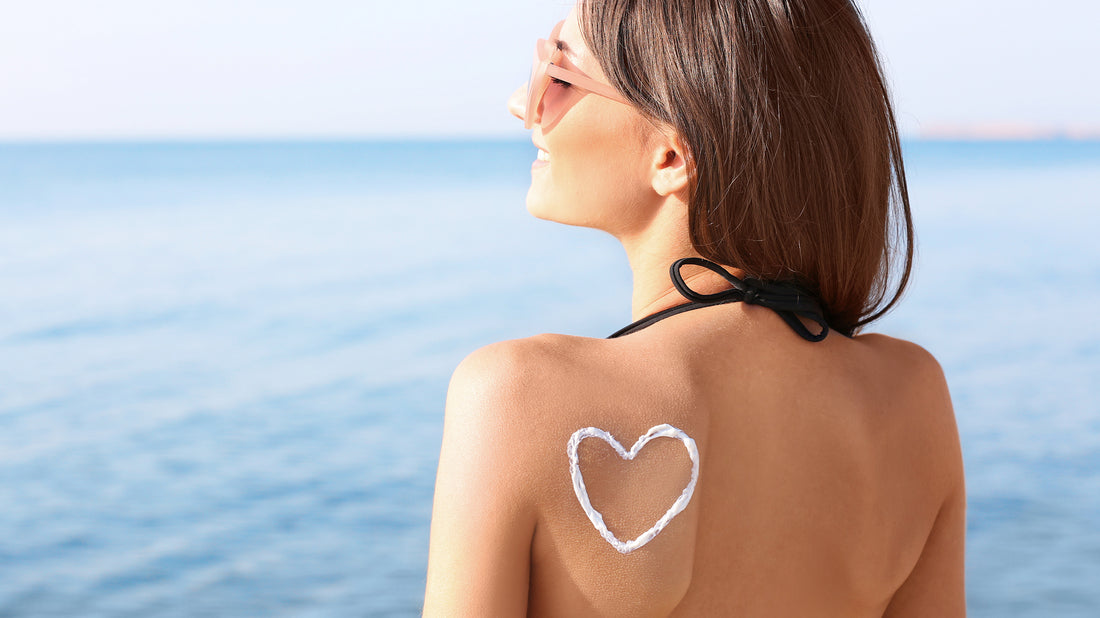
What sun protection is good for your skin?
Solar radiation is the main factor in skin aging, causing so-called photoaging. Solar radiation destroys collagen and elastin fibres resulting in a loss of elasticity and the appearance of wrinkles. Excessive exposure to UV radiation also leads to hyperpigmentation and destruction of the skin barrier, which is responsible for protection against external environmental factors.
Solar radiation consists of ultraviolet (UV), infrared (IR) and blue (High Energy Visible Light, HEV) radiation.
UV radiation from the sun is composed of UVA and UVB rays. UVB accounts for 5% of the UV, which is responsible for tanning of our skin. It is stopped by clouds and glass. The remaining 95% is UVA, and it is mainly responsible for the photoaging of the skin. It penetrates deeper than UVB into the skin structure, causing the formation of free radicals. Unlike UVB, it penetrates through glass, fog and clouds.
Infrared (IR) and blue (HEV) radiation are emitted by the sun and electronic devices such as smartphones, tablets, computers, and TVs. They also reach the deep layers of the skin. Intensive exposure to those radiations causes skin damage and photoaging.
Classification of sunscreens
The two main types of sunscreens are mineral and chemical filters.
Mineral sunscreens act as micro-mirrors that reflect solar radiation. They are usually less pleasant to use than chemical sunscreens. Mineral filters spread worse on the skin and can leave a white film. Their advantage is that they rarely cause allergies and irritation, so they are recommended for sensitive skin and for children.
Chemical filters absorb UV radiation. They are pleasant to use and don’t leave a white film on the skin. We divide chemical filters into old and new generations. Old generation sunscreens can penetrate the epidermis. New generation chemical filters are more stable and don’t infiltrate the skin. They are safer to use and provide better sun protection.
How to choose the right sunscreen?
For a sunscreen to be considered effective, it should protect against UVB and UVA radiation. The SPF (Sun Protection Factor) assesses the degree of protection against UVB radiation. Another indicator - PPD (Persistent Pigment Darkening) is used to determine the degree of protection against UVA radiation. The higher it is, the greater its photoprotection against UVA rays. It is essential when using photoprotection to use cosmetics that protect against both types of UV radiation - UVA and UVB.

Tomorrowlab’s DAY CATALYST is a lightweight daycare with the patent-pending HSF molecule technology and integrated sun protection against harmful UVA and UVB. It is based on new generation filters. In addition to protection against UV-related skin aging and environmental influences, it reactivates the cellular regenerative mechanism and ensures an intensive moisturizing effect. It is perfect for everyday use for younger-looking skin, improving elasticity and skin structure.
A photoprotector skin care regime should be used daily, regardless of the weather or season. The intensity of UVA radiation, which is the leading cause of skin photoaging, remains at a similar level throughout the year. It penetrates through glass, clouds and fog, which is why our skin is exposed to their harmful effects even in winter or on cloudy days.